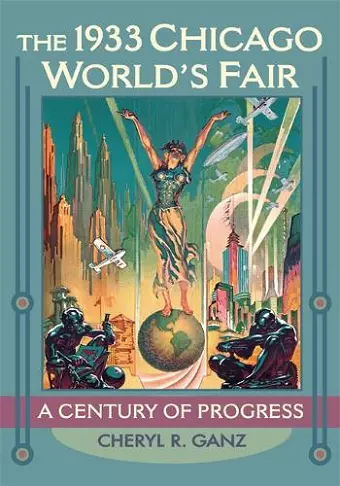The 1933 Chicago World's Fair
A Century of Progress
Format:Paperback
Publisher:University of Illinois Press
Published:6th Jan '12
Currently unavailable, and unfortunately no date known when it will be back

From fan dancers to fan belts--the compelling, untold stories of Chicago's 1933 world fair--abundantly illustrated with colour and black-and-white photographs
From fan dancers to fan belts--the compelling, untold stories of Chicago's 1933 world fair
Chicago's 1933 world's fair set a new direction for international expositions. Earlier fairs had exhibited technological advances, but Chicago's fair organizers used the very idea of progress to buoy national optimism during the Depression's darkest years. Orchestrated by business leaders and engineers, almost all former military men, the fair reflected a business-military-engineering model that envisioned a promising future through science and technology's application to everyday life. Fair organizers, together with corporate leaders, believed that progress rides on the tide of technological innovation and consumerism.
But not all those who struggled for a voice at Chicago's 1933 exposition had abandoned the traditional notions of progress that entailed social justice and equality, recognition of ethnic and gender-related accomplishments, and personal freedom and expression. The stark pronouncement of the fair's motto, "Science Finds, Industry Applies, Man Conforms," was challenged by iconoclasts such as Sally Rand, whose provocative fan dance became a persistent symbol of the fair, as well as a handful of others, including African Americans, ethnic populations and foreign nationals, groups of working women, and even well-heeled socialites. They all met obstacles but ultimately introduced personal, social definitions of "progress" and thereby influenced the ways the fair took shape.
In this engaging social and cultural history, Cheryl R. Ganz examines Chicago's second world's fair through the lenses of technology, ethnicity, and gender. The book also features eighty-six photographs--nearly half of which are full color--of key locations, exhibits, and people, as well as authentic ticket stubs, postcards, pamphlets, posters, and other items. From fan dancers to fan belts, The 1933 Chicago World's Fair: A Century of Progress offers the compelling, untold stories of fair planners and participants who showcased education, industry, and entertainment to sell optimism during the depths of the Great Depression.
Recipient of the Smithsonian Institution Secretary's Research Prize, 2010.
"Well researched and beautifully illustrated. . . . This will be an eye-opening book for people who care to learn more about how, during the dark days of the Great Depression, the political economy was reinvented through mass culture, and how, as a result, Americans came to see themselves in a new way."--Journal of Illinois History
"This book on Chicago's second big show is a welcome addition to world’s fairs collections. Recommended."--Choice
"With graceful prose and beautiful illustrations, Ganz demonstrates the fair's central themes of modernist architectural design, financial economy, and material progress."--The Journal of American History
"Engaging social and cultural history."--Illinois Times
"A highly analytical social and cultural history of the 1933 Chicago World's Fair containing many wonderful illustrations."--Left History
"A formidable history. . . . This beautifully illustrated book tells the story of the fair not simply from the perspective of its architecture . . . but from the perspective of women's history, ethnic history, and the social and political background of organizers."--Indiana Magazine of History
"Ganz's detailed and interesting text provides an in-depth look at the individuals and forces behind the 1933 Chicago Fair, and it should please many of those interested in fair history."--Reviews in American History
"Beginning and ending with controversial fan dancer Sally Rand, The 1933 Chicago World's Fair gives readers a distinctive and authoritative take on this important exposition. Cheryl R. Ganz's thorough research and very readable writing style ensure that this will remain the standard history of A Century of Progress for years to come."--John E. Findling, coeditor of Encyclopedia of World's Fairs and Expositions
"Cheryl R. Ganz gives a fascinating behind-the-scenes view of the 1933 Chicago world's fair, with interesting angles on the infighting among various interest groups. A significant addition to world's fair studies, with novel contributions regarding gender, race, ethnicity, and class."--Arthur P. Molella, director of the Smithsonian's Lemelson Center for the Study of Invention and Innovation
"This book's strength lies in its exploration of what 'progress' meant to the various world's fair stakeholders and to the fair's historical narrative. Ganz enriches the history of world's fairs and expands our understanding of the early twentieth century."--Bonnie Lilienfeld, deputy chair and curator of the Division of Home and Community Life at the National Museum of American His
- Winner of <DIV>Recipient of the Smithsonian Institution Secretary's Research Prize, 2010.</DIV> 2010
ISBN: 9780252078521
Dimensions: 254mm x 178mm x 23mm
Weight: 653g
272 pages